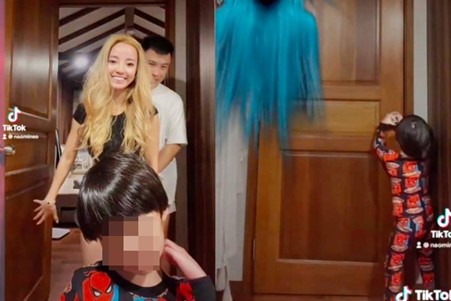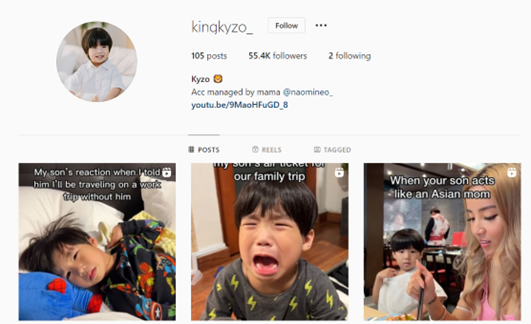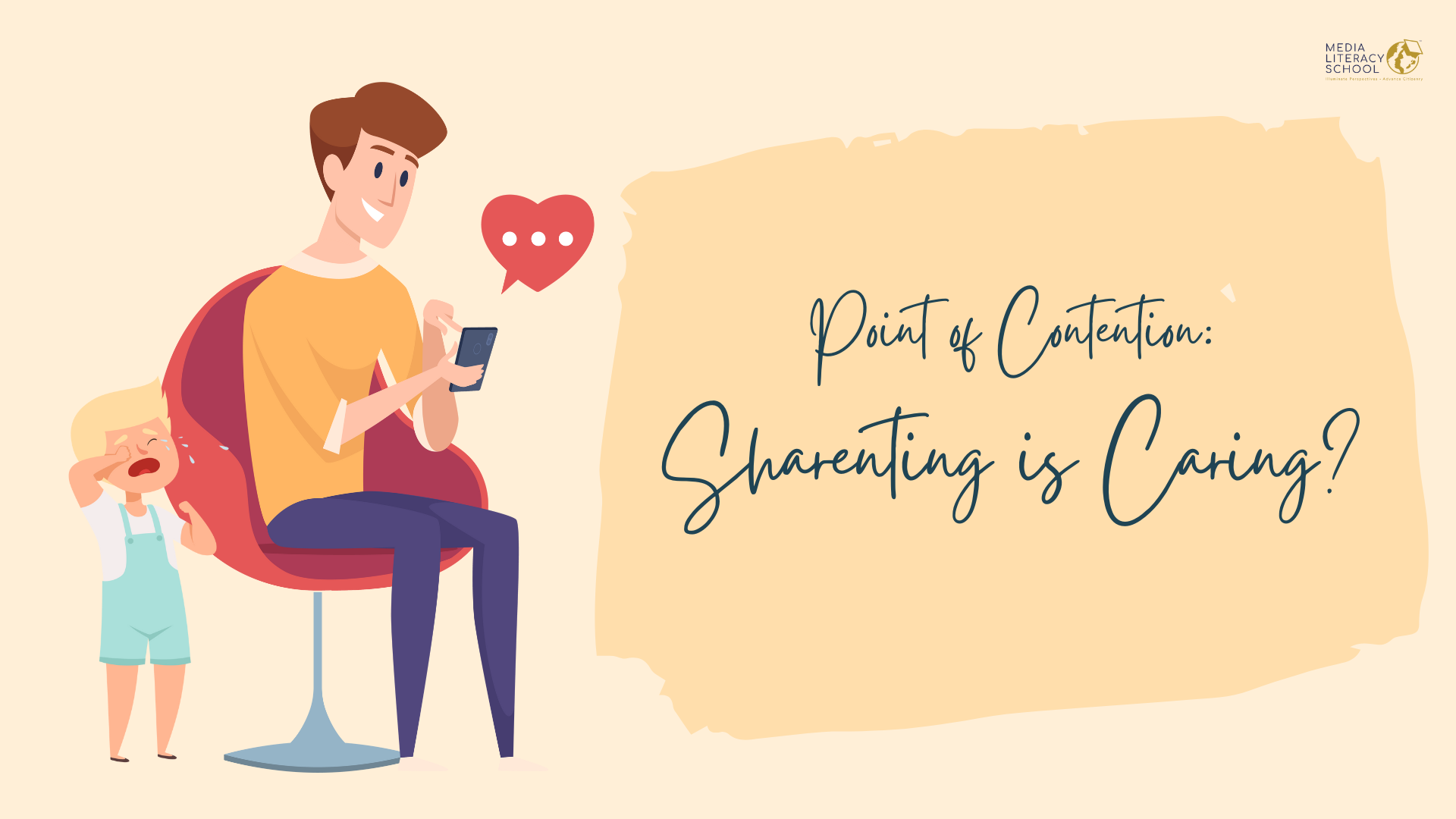(Reader mode is recommended for optimal viewing on mobile devices.)
What is “Sharenting”?

Local influencer Naomi Neo plays a Halloween ghost prank on her son Kyzo. She often features Kyzo on her TikTok account. Photo: TikTok
A portmanteau of “share” and “parenting”, the Oxford English Dictionary defines sharenting as “the practise of sharing news, images, or videos of one’s children on social media websites”. These include pictures of their new-borns in the crib, happy family moments, and milestones such as the child’s first day in school.
It is an increasingly common trend among digitally savvy parents. Some also create social media accounts for their children to better facilitate the process.
According to cross-cultural research conducted by internet security company, AVG:
- 81% of mothers with babies aged two and below has posted a picture of their child before.
- 5% of mothers created a social media account for their babies.
Another study by Nominet showed that the average UK parents posted nearly 1,500 pictures of their children by the time they are five years old. While data on sharenting in Singapore is still limited, many Singaporean parents are clearly onboard with the trend. It is also not rare to come across Instagram accounts of children being managed by Singaporean parents.
Pause & Think: How often do you sharent and what do you post? |
Benefits of Sharenting

Kyzo has an Instagram account managed by his mother Naomi Neo with over a hundred posts and a sizable following. Photo: Instagram
Beyond the trendiness, there are many good reasons to sharent:
- Record your child’s special moments.
- Stay connected to friends and family.
- Receive advice from friends and family.
- Raise awareness of your child’s needs.
- Manage your child’s social media presence.
Parents across the globe have shared heart-warming tales about how sharenting has helped tremendously. It is little wonder that it is a growing phenomenon.
Pause & Think: What reason motivates you or your friends to sharent? |
Dangers of Sharenting

Local influencer Sarah Cheng-De Winne received backlash for sharing her daughter’s emotional distress. This reignited national conversation on the ethics and dangers of sharenting. Photo: TikTok
Most social media platforms bar users under the age of 13 because of the US Children’s Online Privacy Protection Act (COPPA). The law was passed in 1998 to combat the collection of adolescent personal information amidst a rise in targeted marketing. Unfortunately, the protections do not extend to information that was sharented. This is dangerous as adolescent targeted marketing remains a big market. YouTube and Epic Games paid hefty fines for COPPA violations in 2019 and 2022 respectively. US regulators alleged that these companies illegally collected personal information and used it to manipulate children into making purchases.
Furthermore, constant camera attention might be unhealthy for children’s development. Research indicated that primary school students who were filmed tend to be distracted and self-conscious. The camera creates an expectation of evaluation in the children, and this negatively impacts intrinsic motivation and creativity. Older children might even suppress their natural behaviour and emotions to influence views, likes or comments from online strangers. Emotional suppression has been linked to mental health problems such as depression and should be avoided.
Pause & Think: What are some of your concerns about sharenting? |
Conclusion
Like any other digital phenomenon, sharenting has its advantages and dangers. Momfluencer Bobbi Althoff is well aware of the dangers and makes sure that her children never appear on her page. The identities of her two daughters are a well-kept secret today but it wasn’t always like this. Her eldest daughter’s name, birth date, photos used to be freely available on her social media account. However, Bobbi became worried about her children’s safety after a run-in with mean comments in one of her videos. Overnight, she deleted all the posts with her daughter’s information.
Read more about Bobbi and other momfluencers here.
We do not have to go to the same length as Bobbi. The key here is to make an informed decision about when and what to sharent. Here are some of our recommendations:
- Ensure that the social media account the child appears on is private.
- Do not share sensitive information such as the child’s name, birthday, and school etc.
- Do not post content that might embarrass the child.
- As your child grows older, respect their requests to remove or not post content about them.
- Consider editing the content such as using emojis to cover the child’s face.
Pause & Think: What is one step you will take or recommend today? |
References
Agbo, N. B. (2018). The effects of surveillance and evaluation expectation on the creativity of primary school pupils. British Journal of Education, 6(9), 25–36.
This article was written by our intern, Yong Han, who conducted research & development for Media Literacy School.

